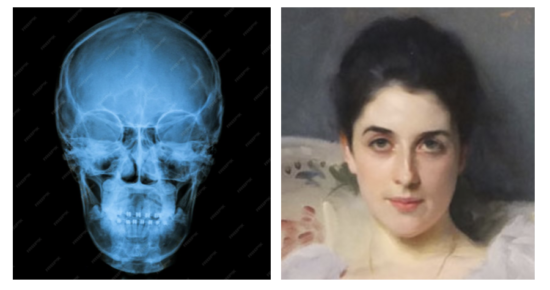
Wine has many faces. If it didn’t, how would we write a fresh essay about it every week (not counting the chestnuts from the archive we twitch a feather duster over, spruce up a bit and republish from time to time)? Considering the richness of the subject, its hard to imagine one would ever run out of meaningful things to say about it.
As with many other matters we humans turn our lens on, opinions about proper methods of investigation quickly emerge — and just as rapidly diverge. In the winey world, for example, we bump up against the familar, age-old controversy of whether a scientific or more humanistic approach is likely to produce the most helpful results. X-Ray or portrait? is one particularly clever way of posing the problem.* Let’s chew it over, shall we? Those with beards may begin scratching
So, there are really two camps at labor in this particular vineyard: Camp 1, comprised of chemists and technicians who operate on a micro level, and see wine as a kind of collection of molecular assets needing to be pushed around and put into a more agreeble order than they could manage on their own; while types we might style humanists gather in Camp 2 and put their faith in context, experience, sensibility and a discursive (metaphor; analogy; allusion) rather than strictrly analytical approach to description.
The picture is overdrawn, of course, but arguably not wholly unrepresentative of the situation. I’m not just hedging my bets when I say that both groups and their respective, approaches have something to contribute to questions such as what is wine anyway? How does one differ from another? What do we mean when we say — as we seem to love to do — that one wine is better than another? Put very simply, how is wine best explained?
I’m here to admit that, as a person with very little science background, I’m more than a little enthralled by reading I’ve done that identifies the naturally-occurring chemical compounds responsible for what we taste and smell in wine. While my original exposure to this came via one of the earliest wine infomation online sites I know of, Tom Cannavan’s Wine Pages, where Australian wine guru Tom Stevenson posted his Taster’s Handbook of Wine Aromas and Flavors, including what he calls his mind-jogging list, here. There’s a lot to be learned from it.
Those of you with a negative view of sulfur may be surprised to learn there how many familiar wine aromas are the result of naturally-occurring sulfur compounds called thiols, or that a class of compounds known as terpenes are responsible for the scents of rose (geraniol), lavender (linalool) and citrus (citronellol), among many others. The list provides a veritable x-ray of wine character, or at least its analogue.
What I find interesting about this, is that none of these compounds are at all unique to wine; they’re widely distributed among the plant world. This explains both their familiarity (even novice tasters readily identify them) and the pleasure we derive from discovering them in a wine glass
And it’s just here, I think, that scientists and humanists can find common ground. It’s precisely (or at least largely) because wine is, in its flavors, aromas, textures and hues reflective of a whole world of common experience that it can function as the rich mine of references, associations and allusion — both sensory and imaginative — that has marked its long, illustrious history and is chiefly responsible for the many faces it presents to us.
Radiology or portraiture? Together they give a fuller picture than either could on its own. What hath been thus joined together, let not man put asunder.